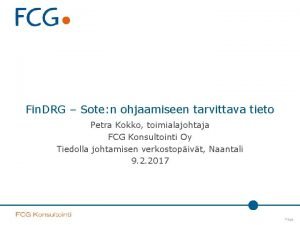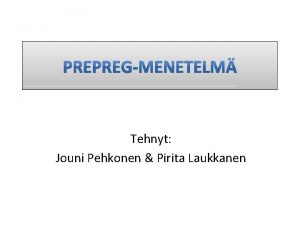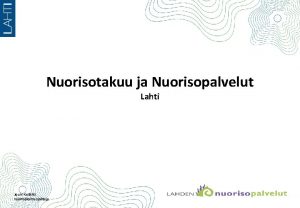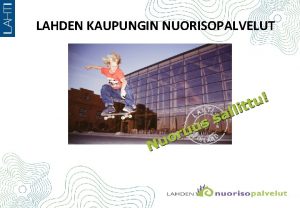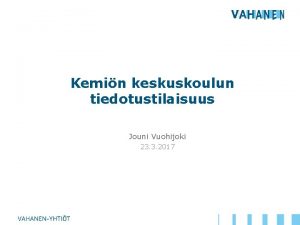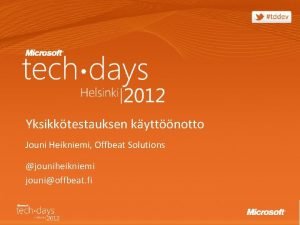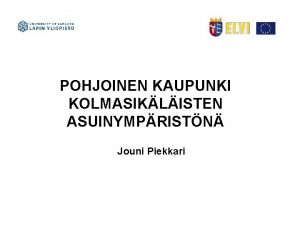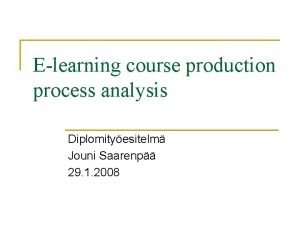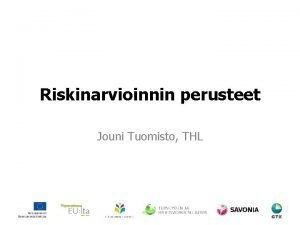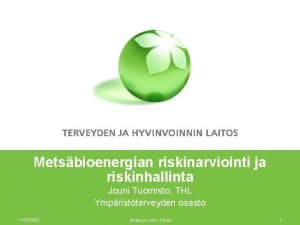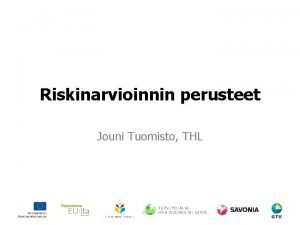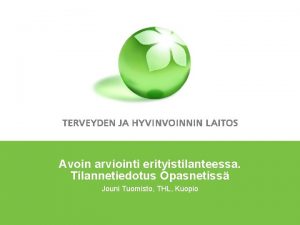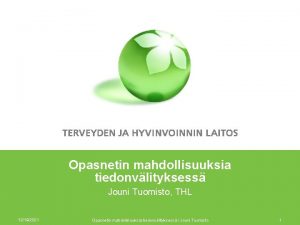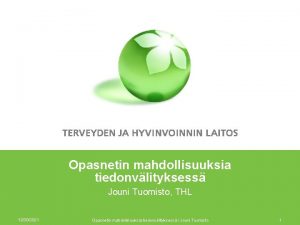Overview of models Jouni Tuomisto THL Outline Why














- Slides: 14

Overview of models • Jouni Tuomisto, THL

Outline • Why do we do modelling? • Producing result from rationale. – Deterministic, heuristic, and probabilistic estimates. – Functional, differential, logical, and probabilistic relations. – Other relations (neural networks). • Mid-term evaluation of the course. • First drafts of DA study plans. Brief presentations by students of and discussions about the first DA

Decision analysis is done for purpose: to inform and thus improve action Q R A

Why do we do modelling? (1) • Situations are difficult to understand. Modelling gives us coherent answers to several questions.

Why do we do modelling? (2) • Decision options are difficult to compare. Models can summarise important points and thus help us choose. • link

Why do we do modelling? (3) • ”Expressions in mathematical language are limited. Therefore you can’t say many things with mathematics that you can say with a natural language. That is the strength of mathematics. ” -unknown • Mathematics forces us to be explicit, precise, and coherent.

Why do we do modelling? (4) • It is an effective method to share our understanding to others. • It is an effective method to learn from the understanding of the others. • Modelling code and intermediate results are undervalued as a means to share understanding. – E. g. in our department (130 people, maybe 20 doing modelling) we are using at least these languages: Analytica, R, SAS, S-plus, Excel, Matlab, Octave, C++, Simantics, SPSS. – What if people were writing only in Swedish, French, Latin, Mandarin Chinese, Swahili, Spanish, … • We need uniform modelling platforms!

In modelling, it is all about causal diagrams! • …or more precisely, directed acyclic graphs. • They consist of – Nodes – Arcs (arrows)

Sources of information. • Observations: direct observations about the issue of interest. • Neighbours: information about issues closely related to although not exactly about the issue of interest. For example, observations from a previous year or from a related population. • Parents: information about issues that are causally upstream, i. e. have causal impacts on the issue of interest. • Children: information about issues that are causally downstream, i. e. are causally influenced by the issue of interest.

Sources of information (2) • Likelihood: a probability function that describes what can be known about the issue of interest given data. • Function: a functional relationship between two or more issues. It is used to calculate the value of one issue given all others. • Time-1: information about how things were at a previous time point. • Kriging: a group of (geostatistical) techniques to interpolate the value of a random field (e. g. , the elevation, z, of the landscape as a function of the geographic location) at an unobserved location from observations of its value at nearby locations. link • Gut feeling: a sensation about having information although no clear source (those above) can be given. This is the weakest source of information.

Kriging • link

Approaches to produce a result from rationale • The idea is that one or more sources of information (above) is used, and then one or more of the approaches (below) are used to manipulate the information to come up with a result. • Information that is required by an approach is listed in italics. Software tools specifically designed for this purpose may be listed in bold. A generic software that can handle most cases is R. • Application of direct observations about the issue. observations, likelihood • Interpolation and extrapolation from observations about a related but another issue. neighbouring observations, likelihood, (kriging) • Deterministic inference with equation. parents, function

Approaches to produce a result from rationale (2) • Differential equation. parents, function, time-1 • Differential equation with feedback. parents, function, time-1, children Simupedia • Marginal distributions and rank correlations in between (vines). observations, likelihood, parents, rank correlations Uninet • Gibbs sampling (hierarchical Bayes models). observations, likelihood, parents, children Open. BUGS • Descriptive models. observations, likelihoods / functions • Neural networks. observations, likelihoods / functions • Predicate logic. formal sentences • Expert elicitation. any information Excalibur • Heuristics (experience-based techniques for problem solving, learning, and discovery) any information

Neural networks • Inputs are grouped into output groups based on their similarities to some hidden parameters. • Hidden parameters are continuously adjusted during computing.


